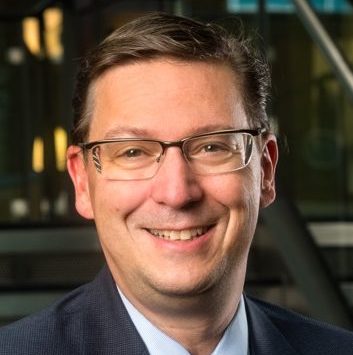
Innovator Spotlight: Andrea Werner — Senior Vice President, Population Health Strategy and Transformation
AVIA
Insights
AVIA

When it comes to driving impactful digital transformation, few things are more valuable than getting the on-the-ground perspective of colleagues and peers. Innovator Spotlight is a series from AVIA featuring interviews with the people on the front lines of this crucial work: leaders from our Member health systems tasked with putting digital transformation into practice and driving the industry forward.
This Innovator Spotlight highlights the work of Donald Klingen, MD, Senior Vice President, Chief Medical Information Officer at Main Line Health. Donald shared his thoughts on deploying new digital offerings while emphasizing the importance of purpose-driven implementations.
Our main innovation focus has been on how to organize the work around innovation. More specifically, we’re trying to get away from just “doing” digital and being more thoughtful about either innovation or transformation. Instead of just looking at successful launches, we’re looking at outcomes. And we’re really trying to put in more structure and intention. Innovation is not just a cool project, but an actual core strategy. It’s a tighter strategic plan; it’s a lever we’re pulling to try to make sure we’re successful in our innovation or transformation.
There’s actually a debate in our community right now about which word to go with: innovation or transformation? It’s all semantics, but I think of innovation as a new way of doing things, while transformation means a little more. Transformation is innovation plus strategy, or innovation with purpose. You’re not doing something new or innovative for the sake of doing it. You’re doing it with intention.
We’ve bucketed our innovation (or transformation) work into three work streams: patient engagement, back office automation, and clinical innovation. I’m responsible for the clinical innovation arm. In that arm, we have four areas that we’re trying to focus on and come up with a roadmap for. Clinician experience: What can we do to make it easier to do our jobs? Clinical automation is another: what can do to make the work easier? This also includes things like imaging AI, generative AI, or other clinical automation tools.
Clinical communication and collaboration is an oldie but a goodie when it comes to IT. What I’m finding culturally is that we have all these technologies to communicate, but we’re struggling. We need to do more work to figure out how we play in the sandbox.
And the fourth is the virtual care of the patient. That’s a big umbrella and can be anything from remote patient monitoring to virtual nursing to tele-sitting to a virtual care operation center joined to an EICU. They all have a component of someone doing something remotely, meaning there’s a virtual presence involved. Now the question is, how do we organize it?
You know, the AI space is certainly the hot topic. We’ve seen a lot of success in the imaging AI space, identifying lesions. And the success there is not just identifying lesions, but it’s been the speed to activation—to getting the right information to the right person to do something about it.
In our case, we started out working with the stroke team. They love this technology, because as soon as the patient hits the door and the scan is done, they’re aware of what’s going on and what they need to do. I am hopeful. We’re also doing a couple generative AI projects in the outpatient space, both encounter note generation and inbox prioritization.
Culturally, it’s interesting. I’ve had my first conversations with my legal compliance team. I think there’s a fear that there’s not an actual person tapping the keys. There’s the question of how much ownership there is and what’s the accuracy. It’s going to take some getting used to. The generative AI space, I think, has a lot of potential, but it’s a little bit of the wild west now.
Start with what you can. The areas where we’ve been able to accelerate innovation the most are the areas where we’ve had invested end user groups. End user engagement and commitment is key.
You also need an operational owner with an operational vision that you’re supporting. We have a new Chief Nursing Officer at Main Line Health who has taken this principle to heart. In the virtual nursing space, after seeing lackluster adoption she’s made it clear that virtual nursing is a core strategy for nursing and worked with her managers to take ownership.
Do you want to join a network of the most innovative health systems in America? Are you ready to put digital innovation into practice? Contact AVIA to find out how you can accelerate the speed and impact of digital in your health system.